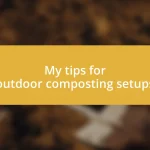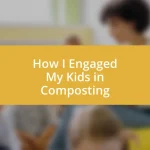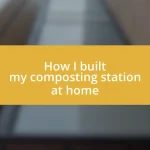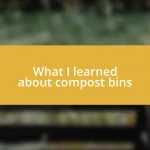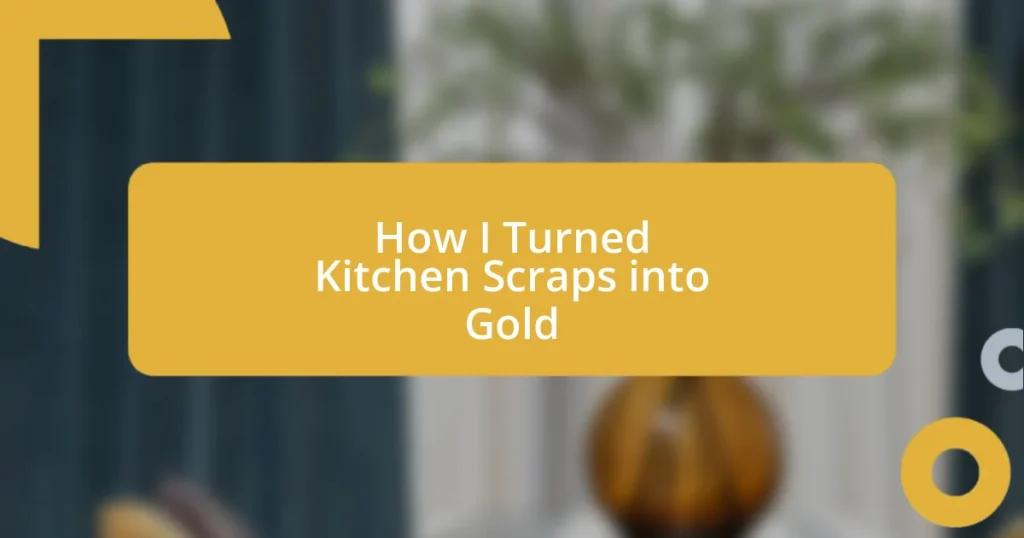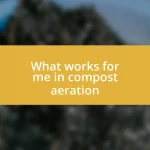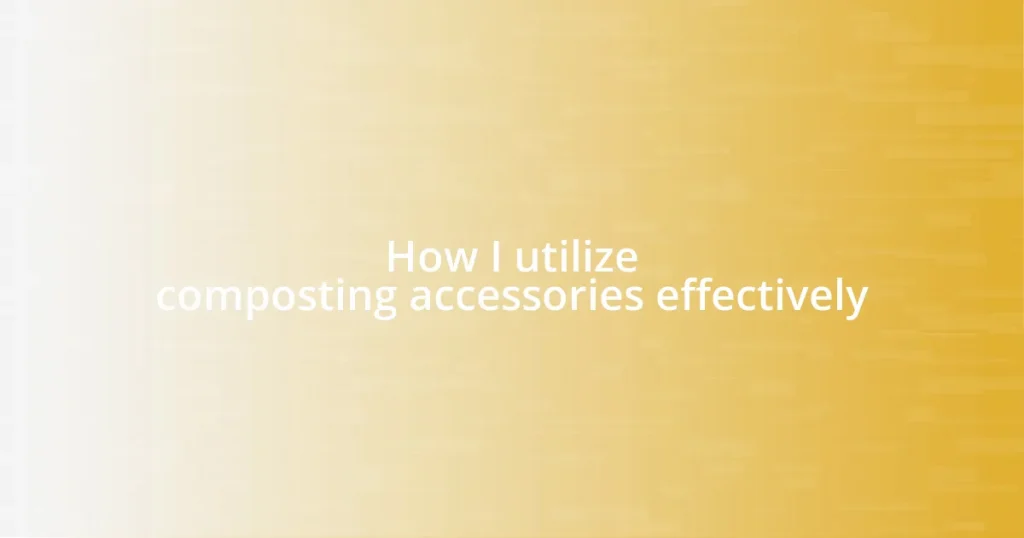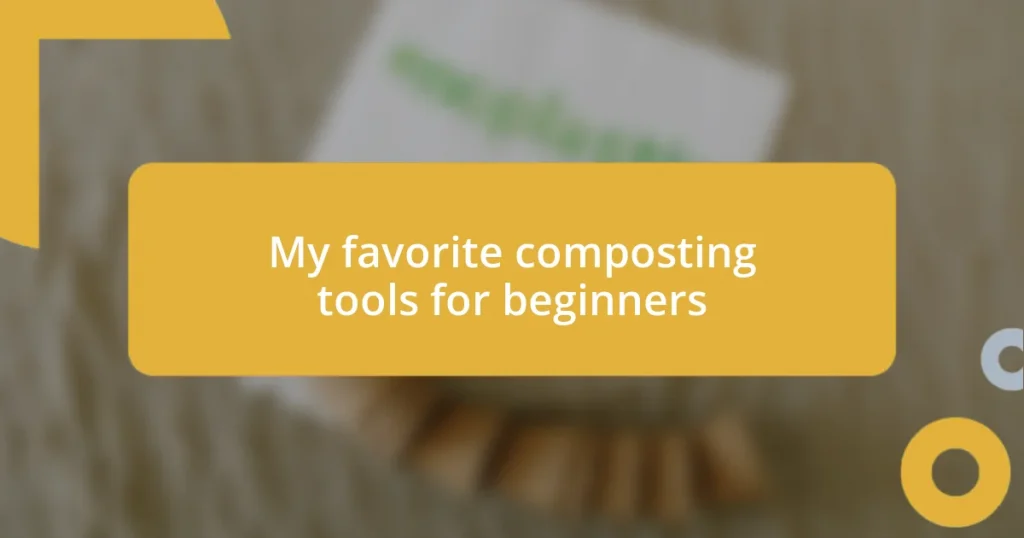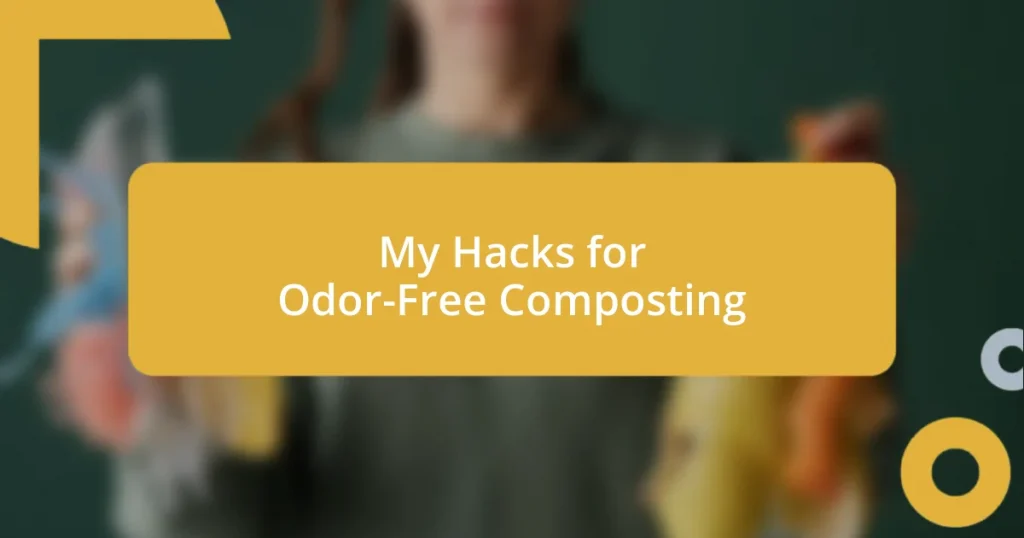Key takeaways:
- Kitchen scraps hold significant potential for sustainability, with simple shifts in perspective allowing for creative repurposing of food waste into valuable resources.
- Transforming vegetable and fruit scraps into items like broth, natural dyes, and snacks enhances meals and reduces waste, fostering a deeper connection with cooking.
- Sharing experiences and ideas about using kitchen scraps can build community, inspire creativity, and promote sustainable practices among friends and neighbors.

Understanding Kitchen Scraps Value
When I first began my journey with kitchen scraps, I was astonished at their potential. Instead of tossing out vegetable peels or stale bread, I started seeing them as little treasure troves of nutrients. Have you ever thought about how much food ends up in the trash? It really made me reconsider my relationship with food waste.
The value of kitchen scraps goes far beyond just saving money—it’s about embracing sustainability. For instance, I’ve turned celery bottoms into a thriving plant in my kitchen. Who knew something that would have found its way to the compost could instead grow into a vibrant plant, right at my fingertips? This experience has deepened my understanding of just how resourceful we can be if we simply look at what we have in a new light.
I recently realized that not all kitchen scraps are created equal. Some offer more value than others, like citrus peels or coffee grounds. When I started using my leftover citrus to make homemade cleaners, it felt like a win-win situation—I was decluttering and creating something useful from what I previously deemed waste. Isn’t it amazing how a shift in perspective can lead to practical solutions?

Creative Uses for Vegetable Scraps
When it comes to vegetable scraps, creativity knows no bounds. For instance, I’ve discovered that onion skins can make a fantastic natural dye. The first time I boiled some in water for a DIY project, I was thrilled to see the vibrant hues emerge! It was exhilarating to transform something typically discarded into a beautiful coloring agent for fabric. Have you ever tried this? It really adds a delightful twist to your crafting adventures.
Another surprising use for vegetable scraps is making vegetable broth. Instead of letting carrot tops and potato peels languish in the fridge, I toss them into a pot with some seasoning. The aroma that wafts through the kitchen is absolutely comforting, and the resulting broth is deeply flavorful. I free myself from the store-bought options while savoring the satisfaction of repurposing what would have been waste. It’s a small effort that yields a big reward—plus, it’s an excellent base for future meals!
I’ve also been quite impressed with the potential of beet greens. After roasting the beets, I use those greens in salads or sauté them with garlic. Not only do they add a pop of color and flavor to my dish, but they also make my meals healthier and more nutritious! Each time I do this, I feel more connected to my cooking and the ingredients I have on hand, turning what many consider scraps into a nourishing component of my meals.
| Vegetable Scraps | Creative Uses |
|---|---|
| Onion Skins | Natural dye for fabrics |
| Carrot Tops | Flavorful vegetable broth |
| Beet Greens | Salads or sautéed dishes |

Transforming Fruit Peels into Delights
When it comes to fruit peels, I’ve found they can be surprisingly versatile and delightful. For example, I recently started experimenting with orange peels. I decided to candy them one weekend—what a game-changer! The sweet, tangy flavor combined with a hint of bitterness creates a perfect treat that’s not only delicious but also brings back memories of family gatherings where we enjoyed similar delights. It’s incredible how something that often lands in the compost can be transformed into a delightful snack or even a decorative garnish for desserts.
Consider these enchanting uses for your fruit peels:
- Citrus Peels: Candied snacks or zests for baking and cooking.
- Banana Peels: Blending into smoothies for added nutrients or used in composting for gardening.
- Apple Peels: Making apple-infused vinegar or crafting homemade apple chips.
- Pineapple Peels: Brewing them into a refreshing pina colada-like tea or incorporating into syrups.
Every time I create something new from what would typically get tossed, I feel a sense of accomplishment mixed with nostalgia. These little kitchen experiments not only reduce waste but also invite more joy into my cooking routine. Who knew that those unassuming peels held such delightful opportunities?

Making Broth from Leftover Ingredients
One of my favorite kitchen habits is transforming leftover ingredients into a delicious broth. I remember the first time I gathered vegetable scraps like celery ends and garlic remnants into a pot, adding just enough water to cover them. The result was a broth so aromatic and rich that even my partner complimented it, forgetting entirely that we were using what would have been tossed. Have you ever experienced that comforting smell wafting through your home? It’s like a warm hug in a bowl.
As I started experimenting, I learned that the key to a robust broth lies in the mix. A splash of vinegar helps extract all those flavors from the scraps, while herbs like thyme or parsley add another layer of depth. One afternoon, I experimented by tossing in some old parsley and a few sprigs of rosemary, and I was astounded by the depth they brought to the broth. It made me think—how many flavors have we overlooked simply because they’re at the bottom of our fridge?
What truly excites me is the creativity involved in using scraps from various meals throughout the week. After making a stir-fry, I don’t let the leftover vegetable trimmings go to waste. They become the foundation of my next batch of broth, each time adding a new dimension to the flavor. It’s amazing how something that was once seen as trash can be the start of something nourishing and delicious. Have you ever experimented with making broth from your scraps? If not, you might be surprised at how something so simple can elevate your cooking experience!

Composting Kitchen Waste Efficiently
Composting kitchen waste efficiently has become a rewarding part of my culinary routine. I remember the first time I set up my compost bin in the corner of my kitchen—what a game changer! It felt like a bit of a commitment at first, but I quickly learned to embrace it. Once I began tossing in vegetable peels, coffee grounds, and eggshells, I realized how low-maintenance composting could actually be. Ever tried it? You might find it surprisingly satisfying as those scraps begin to break down into nutrient-rich soil.
One key to efficient composting is the balance between ‘green’ materials—like my fruit and vegetable scraps—and ‘brown’ materials, such as dried leaves and cardboard. I was thrilled to discover this ratio through trial and error. At first, my compost bin became a bit smelly, but that was my wake-up call! Now, I strategically alter my contributions, ensuring I have a good mix. Watching the kitchen scraps transform into rich compost feels like magic and connects me to the earth each time I dig in my garden.
I’ve also found that keeping a designated container for compost next to my sink makes the process seamless. It’s like my little compost buddy! I toss in scraps as I’m cooking, and after a couple of days, I empty it into the main bin. It’s almost meditative—how an onion peel, some wilted greens, and a few coffee grounds can come together to breathe life back into my garden. Have you ever considered how much potential lies in your kitchen waste? Each time I compost, I’m reminded of the cycle of life and how we can contribute to a greener planet with such simple actions.

Tips for Sustainable Kitchen Practices
Finding ways to reduce food waste has become a deeply personal journey for me. I once used to toss away the tops of radishes without a second thought until a friend shared an amazing tip: sautéing them with a bit of garlic makes for a delightful side dish. Can you imagine turning what was once trash into a crunchy, flavor-packed delight? It’s all about perspective—everything has potential if we take a moment to think creatively.
Another useful practice I picked up is meal prep, which not only saves time but also encourages me to use every ingredient thoroughly. I started labeling containers for different parts of veggies and herbs, like saving carrot tops for pesto or peelings for chips. Every Sunday, I look at my fridge and feel a sense of accomplishment, knowing nothing will go to waste that week. Have you ever felt that little thrill watching your meals come together without a hint of waste in sight?
I also keep a “food rescue” list on my fridge door, where I jot down items that need to be used before they spoil. This simple act helps me stay organized while also sparking creativity in the kitchen. One day, I noticed some ripe bananas and decided to bake banana bread. The smell that filled my home was pure joy! Have you ever tried rescuing food in this way? It’s delightful to see how using everything to its full potential can lead to surprises and smiles, both for you and your loved ones.

Sharing Your Kitchen Scrap Success
Sharing my kitchen scrap success has been one of the most fulfilling experiences I’ve ever had. I remember one summer when I decided to start a regular routine of sharing my compost with neighbors. We organized a small group, swapping not just compost but also seedlings grown from our shared kitchen scraps. It became a fun little community project. Have you ever considered how sharing can amplify your own sustainability efforts?
One day, while chatting with a friend over coffee, we started comparing our vegetable scraps and what we’d been able to grow. I was particularly proud of the vibrant tomato plants I’d nurtured from leftover seeds. Seeing her eyes light up when I shared my results made me realize just how impactful sharing can be. Isn’t it wonderful to inspire others to see the potential in scraps? I think many people underestimate the joy of seeing someone else thrive because of what you once discarded.
I’ve also created a social media group dedicated to sharing ideas and recipes for using kitchen scraps. The posts have become a source of inspiration and connection. Just last week, a member shared a stunning photo of her carrot top pesto inspired by my earlier post. It warmed my heart to see how a simple idea could spark creativity in someone else’s kitchen! Have you ever tried using social media to connect with like-minded individuals? The sense of community has truly transformed my approach to waste and sustainability.



